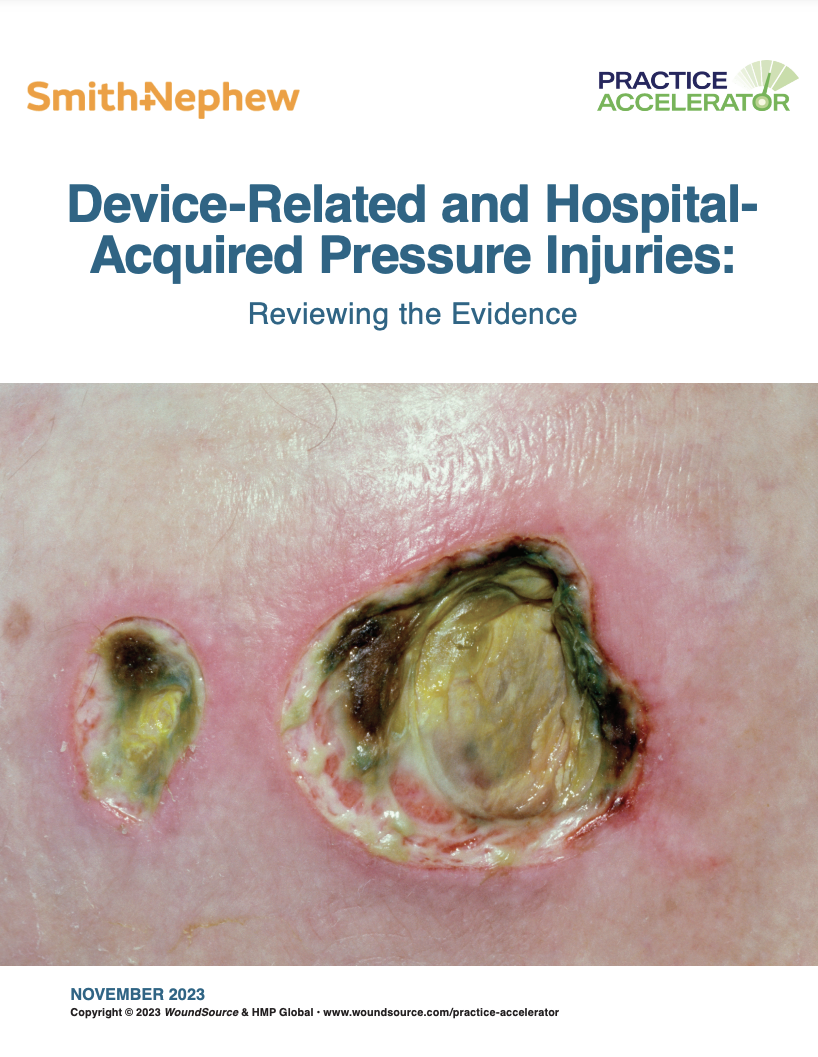
Pressure Injury Prevention
For this month's WoundSource Practice Accelerator series, we are providing education on a variety of topics related to the prevention and management of pressure injuries. Scroll below to read this month's white paper and articles, to print out our quick fact sheet, and to sign up for this month's webinar.
Upcoming Webinar
Protocols for Preventing Intraoperative Pressure Injuries
Monday, November 27Lilibeth T. Acero, RN, DAPWCA
Objectives:
- Explores causes for intraoperative pressure injuries
- Reviews protocols for intraoperative pressure injury prevention
- Live Q&A and Discussion
White Paper
Device-Related and Hospital-Acquired Pressure Injuries: Reviewing the Evidence
Device-related and hospital-acquired pressure injuries complicate patient care, increasing hospital stays and patient mortality. With a growing amount of literature being published regarding prevention and management of these injuries, it can be difficult for wound care professionals to stay on top of evidence-based best practices. This white paper reviews literature and guides regarding the care of device-related and hospital-acquired pressure injuries published between 2019-2023....Fact Sheet
Quick Facts - Pressure Injury Prevention 2023
Patients with multiple comorbidities, advanced age, and limited mobility are at risk for pressure injuries. Within a hospital or ICU setting, these injuries can further complicate care, delay healing, increase the cost of care, and even lead to litigation. Device-related pressure injuries such as those of the mucosal membrane may require differing assessments and protocols than pressure injuries which occur at the sacrum or lower extremities due to differences in affected tissue. For these reaso...Featured Articles
Mucosal Membrane Pressure Injuries
Mucosal membrane pressure injuries are device-related pressure injuries (DRPI) of the mucous membrane. These hospital-acquired injuries are generally considered preventable....
Read MoreTips for Overcoming Offloading Challenges
Offloading is a cornerstone of pressure injury (PI) prevention. Certain patient populations, conditions, and environmental or institutional factors pose challenges to effective offloading that providers must mitigate to prevent PIs. It is important to note that these challenges often overlap with ot...
Read MoreConducting a Biomechanical Exam As Part of Pressure Injury Prevention
Pressure injuries (PIs) often result from sustained pressure and shear on skin and local tissue. As a result, patient position, posture, and load bearing are integral factors to consider to alleviate such forces. A better understanding of the biomechanics of these factors may assist clinicians and s...
Read MoreUnderstanding and Preventing Medical Device-Related Pressure Injury
In this interview, Kelly McFee, DNP, FNP-C, CWS, CWCN-AP, FACCWS, DAPWCA discusses what equipment may cause device-related pressure injury (DRPI), primary factors for DRPI development, prevention methods, assessment tips, and other tools and strategies clinicians can employ in their practice. ...
Read More










